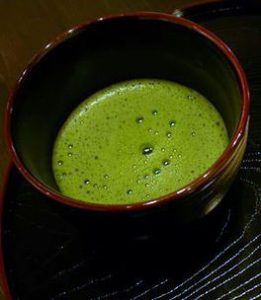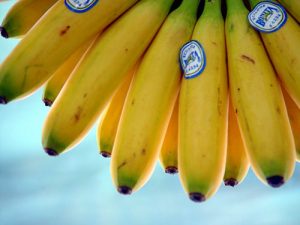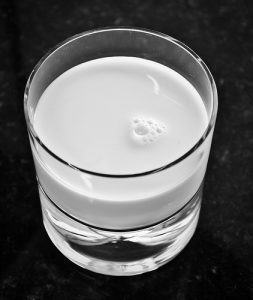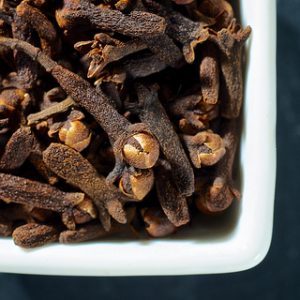
Dietary minerals are very important for our health.
A sustained lack of a specific mineral results in a corresponding illness, much like what happens with vitamins.
While not a rich source of them, green tea leaves have many minerals. The catch is, that the only way to get a significant amount of them is to eat the leaves, not brew them.
This is another reason why matcha is a healthy tea, because the leaves are in powdered form.
The minerals with the greater amount in green tea leaves are potassium, calcium, phosphorus, and magnesium. In a lesser amount we have manganese, zinc, copper and iron.
I’ll be using amounts relating to sencha. Since it’s the most consumed tea in Japan, many studies focus on it.
For convenience, I used 100 grams as the basis for comparisons. Of course, having that amount of tea leaves in one day isn’t feasible (that’s about 50 bowls of matcha), but my intention is just to give you an idea.
Also, keep in mind that sencha leaves are dry. The fact that there’s little water content means that it has in general more nutrients available per gram of weight, so comparing it with non-dry vegetables isn’t really fair.
Potassium

Potassium is an essential mineral for the human body. It is important in nerve function, and to maintain fluid and electrolyte balance.
The daily reference value of potassium intake for adults is 4,700 mg. A popular food high in potassium is the banana, with 358 mg of potassium in 100 grams.
In 100 grams of sencha loose leaves, you’ll get 2,200 mg. In gyokuro leaves it’s even higher: 2,800 mg of potassium!
Calcium

As we all know, calcium is crucial for our bones. It’s also important in the function of blood cells.
A cup of milk has 276 mg of calcium, while 100 grams of sencha leaves contain 450 mg.
The recommended daily intake of calcium is 1,000 mg.
Phosphorus
Phosphorus plays a major role in the structure of the DNA molecule. In addition, phosphorus is present in ATP, which can be thought of the body’s source of energy.
Like calcium, the recommended daily intake of phosphorus is 1,000 mg. You can find a good amount of phosphorus in beef, and especially liver. In 100 grams of liver there are 387 mg of it.
In 100 grams of sencha, there’s 290 mg of phosphorus.
Magnesium
All enzymes utilizing or synthesizing ATP require the presence of magnesium ions for their function. Magnesium is also needed for the structural development of bone.
Our bodies need 400 mg of magnesium per day. A good source of magnesium is spinach, with 79 mg of it in 100 grams of spinach.
100 grams of sencha has 200 mg in it.
Manganese

Although manganese is an essential nutrient, the human body needs only 2 mg of it per day. It’s a cofactor in many vital enzyme functions.
Ground cloves contain a lot of manganese: 30 mg per 100 grams of cloves. In contrast, 100 grams of sencha leaves only amount to 5.5 mg of manganese.
Zinc
Involved in different aspects of cellular metabolism, zinc also plays a role in immune function. Since our bodies can’t effectively store zinc, we must include it in our daily diet.
The recommended daily intake of zinc is 15 mg. You can achieve that intake with 100 grams of raw oysters, since you’ll get 16.6 grams of zinc.
With sencha, you’d just get 3.2 grams of zinc in 100 grams of loose leaves.
Copper
Although we only need 0.9 mg of copper per day, it’s nevertheless an essential mineral. It’s involved in melanin formation, transportation of oxygen, and it’s present in many enzymes.
Whole, dried sesame seeds are especially rich in copper, with 4.1 mg in 100 grams. The same amount of sencha, on the other hand, has 1.3 mg of copper.
Iron

Another necessary trace element, iron is needed for many proteins, the most important one being hemoglobin.
We need a daily intake of 18 mg of iron per day. 100 grams of lentils contain 7.5 mg of iron. This time sencha leaves win, you’ll find 20 mg of iron per 100 grams of leaves.
Sorry for the long list, but I wanted to have the complete info 🙂
Don’t try to get your daily intake of minerals solely through tea leaves. A balanced diet is a much better approach.
Still, it’s nice to know that you get many additional nutrients in green tea leaves, although in a small amount.
Sources:
Green tea museum, minerals necessary for a healthy body (Japanese)
http://nutritiondata.self.com/





September 11, 2013
thanks for sharing these ideas these will be very helpful for understanding the benefits of green tea
October 1, 2013
Thanks for the info, I’m writing something on the health benefits of green so this is all really useful stuff 🙂
October 1, 2013
You’re welcome Gareth. Best of luck with your writing.
May 30, 2017
Hi
Great info
What brand of matcha tea contains calcium?
I just bought one and read the label when I got home and it says 0% calcium 🙁
May 30, 2017
Hi Audrey
Thank you for your comment.
The nutritional labels show information per serving size. Since the serving size of matcha is very small (just a few grams), the calcium content is also small.
So that perhaps it is close to 0% of the recommended daily calcium intake.
February 19, 2018
Hi. I drink a high quality ground decaf sencha. It recommends 1/4 tsp green tea powder with 8 oz of water. Based on your calculations can you help me figure out how much potassium, magnesium etc I’m actually getting in 1 cup of this tea? I’m afraid I have LD in this area.
Thank you.
February 19, 2018
Hi Fran.
You should find out how many grams of tea you drink in each 1/4 teaspoon.
It looks like a very low amount, when you prepare matcha, for example, it would be one full teaspoon for approximately 1.5 grams.
Since you know how many mg of minerals in 100 grams of green tea, you can easily calculate for 1 gram.
March 9, 2021
I started using the “cold brew” method (18 hours) I read that caffeine can be extracted using this method but not sure about the other minerals like potassium and magnesium. Do you know the answer to this question? Thank you!
March 9, 2021
Hi Miguel
Actually, with the cold brew method you will extract less caffeine than if you used hot water.
Regarding the minerals, they are present in low amounts to begin with. The best way would be to eat the leaves, not infuse them, because minerals may remain in the wet leaves.
I don’t know the exact answer in terms of quantity extracted from cold brewing.
June 26, 2022
A table would be nice. It’s not easy to get out the numbers in the middle of all the talk.
It’s surprisingly hard to find reasonable data on matcha.
One problem, you should not be talking about the potassium content of matcha given a size of 100g. No one eats 100g of matcha leaves. You use maybe 3g in tea. So the amount in 100g, however high, is irrelevant.
June 28, 2022
Hi Dov
That is the problem, to avoid very small decimals in amounts of minerals I decided to use 100 grams.
As I state in the post, the idea is not to try to get the recommended daily intake of minerals from tea because it’s impossible. It’s just for informative purposes.
A table isn’t helpful either, because as you say, the amounts of each mineral are so low that it’s pretty much irrelevant.